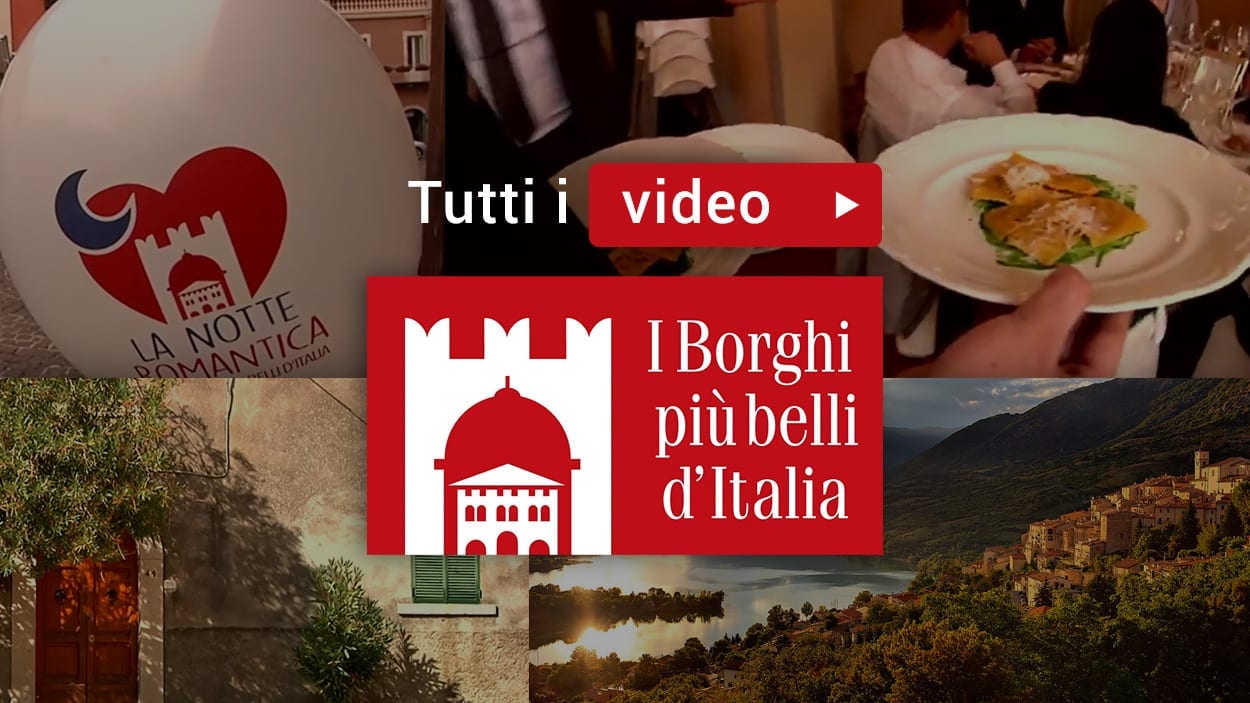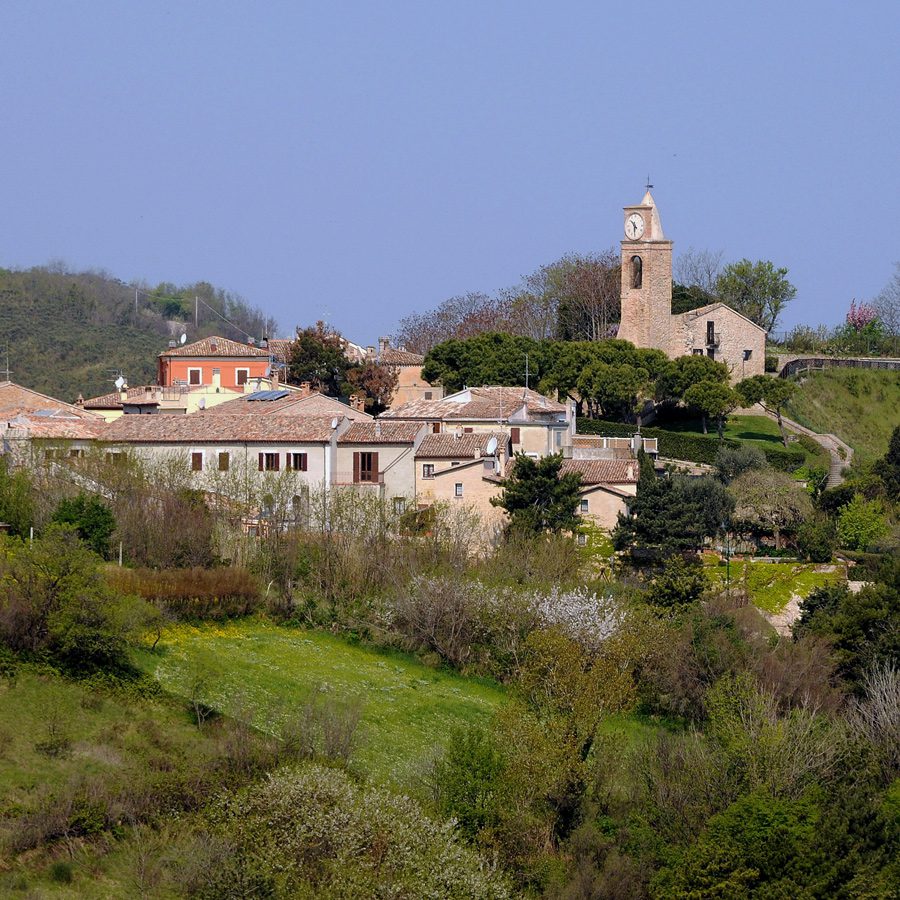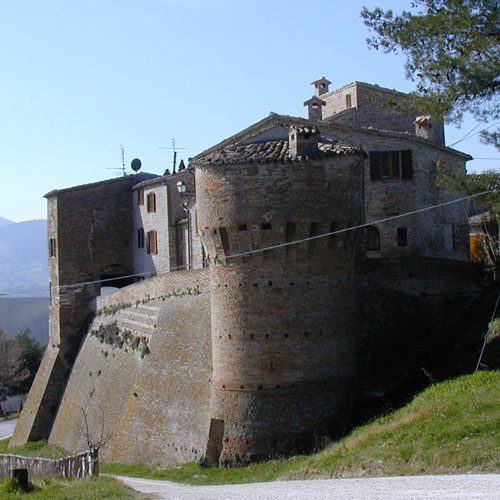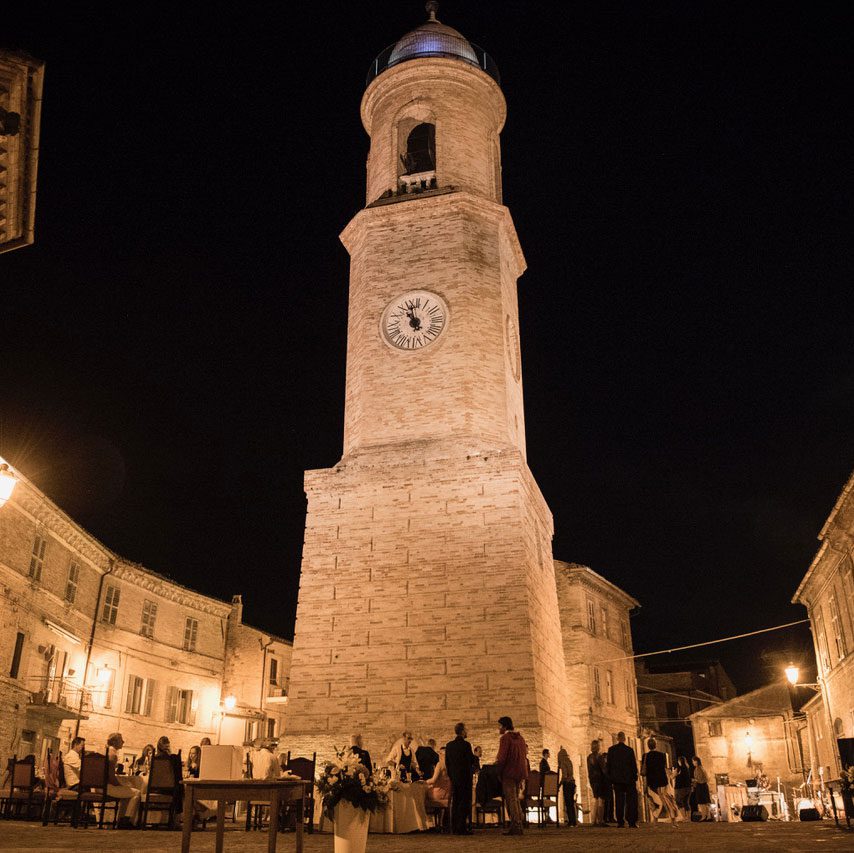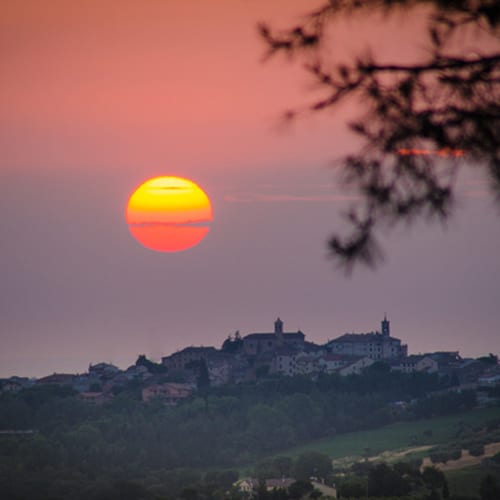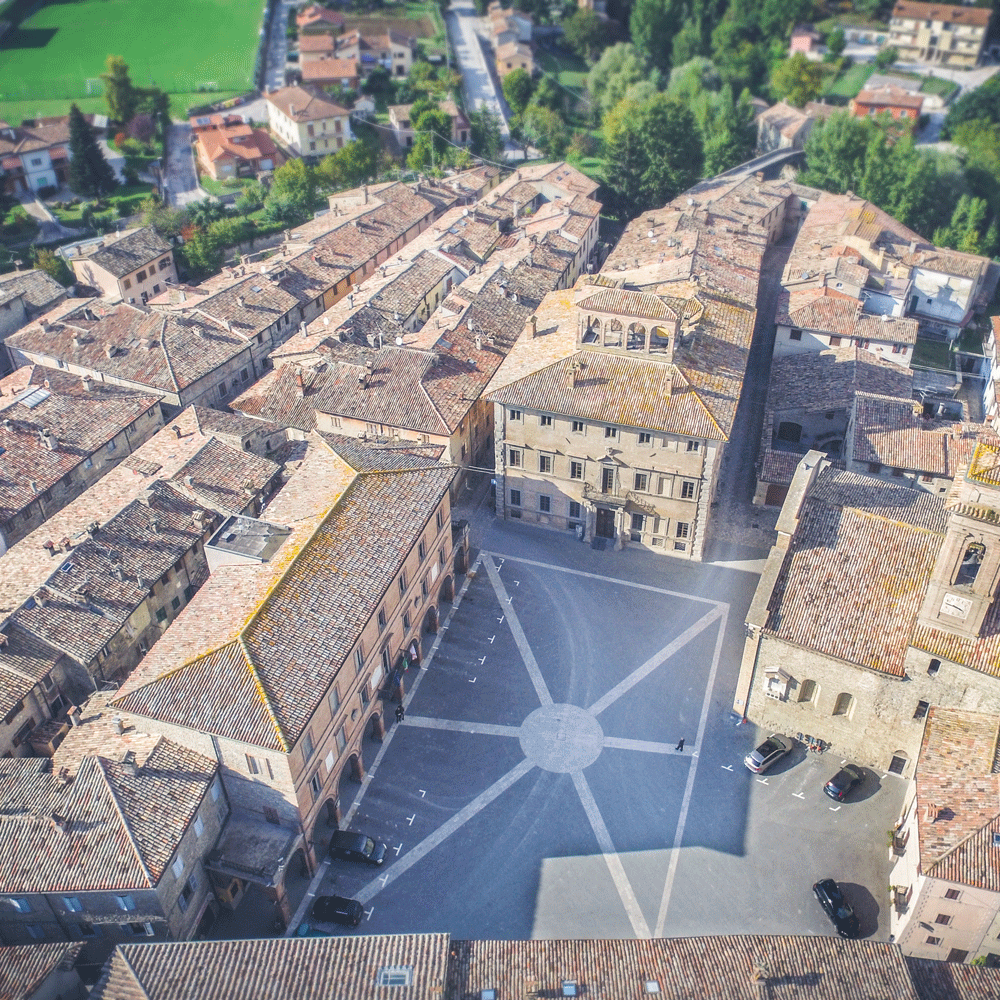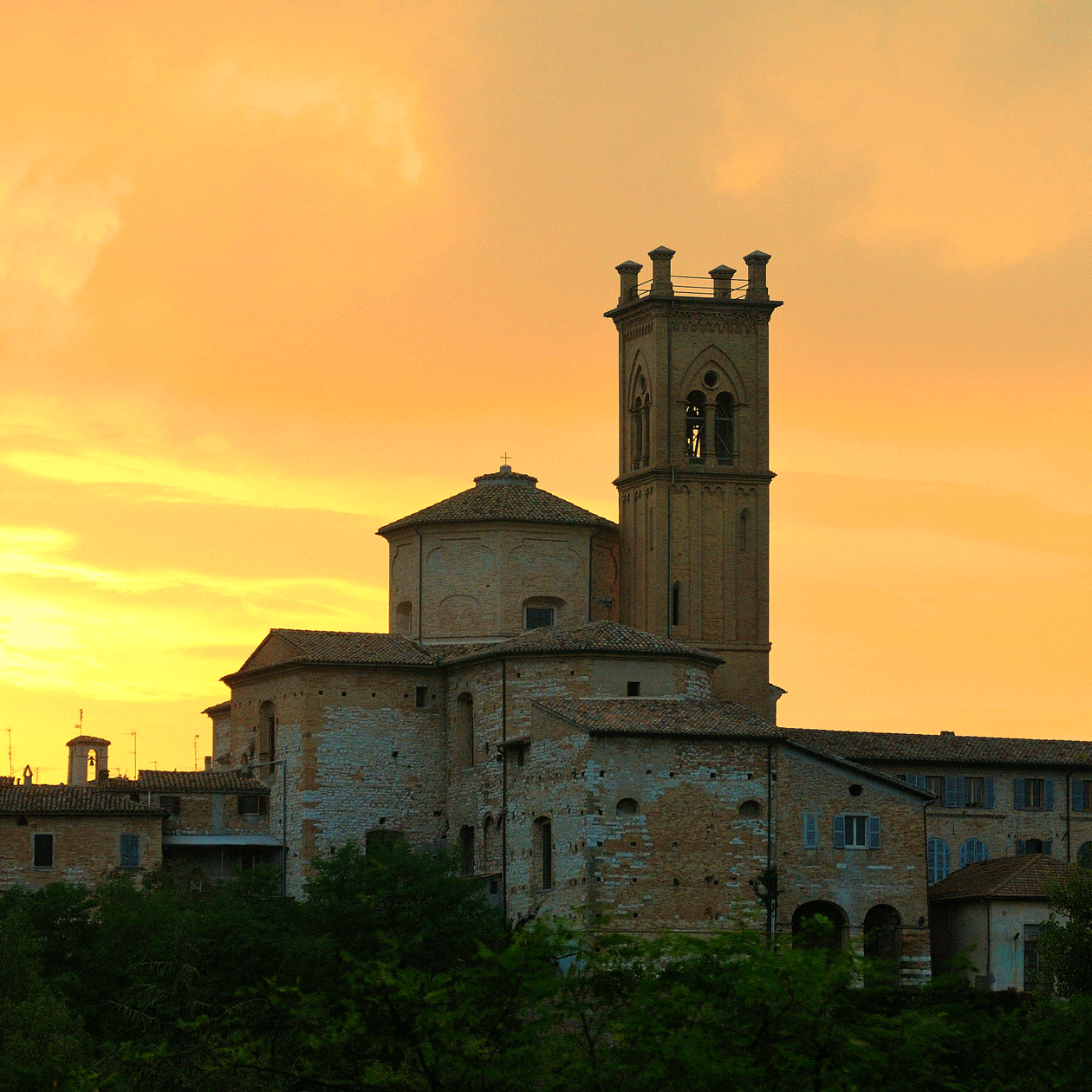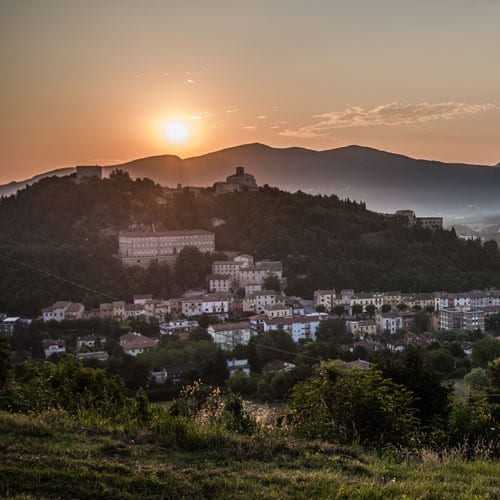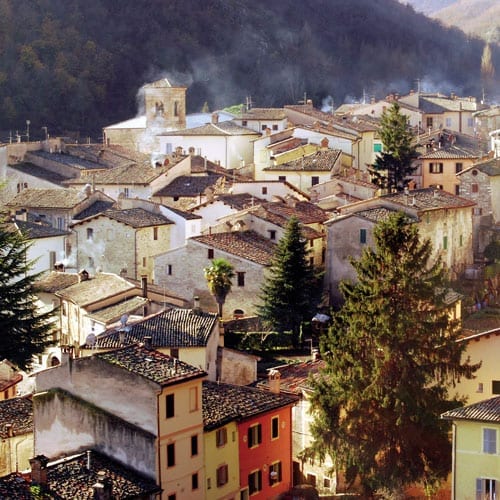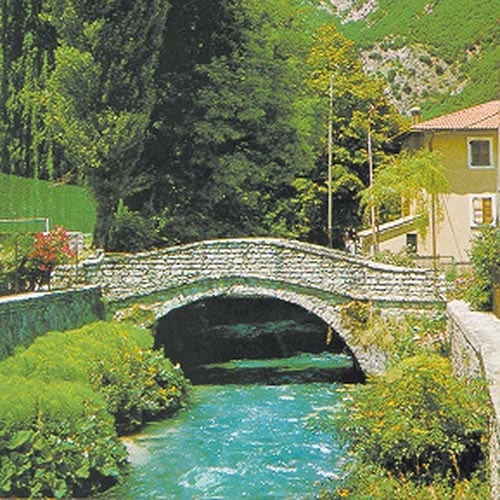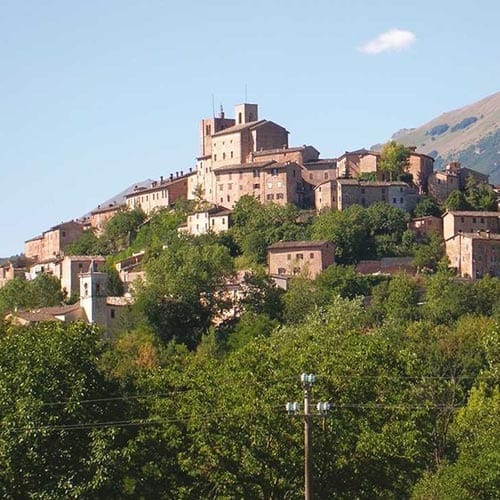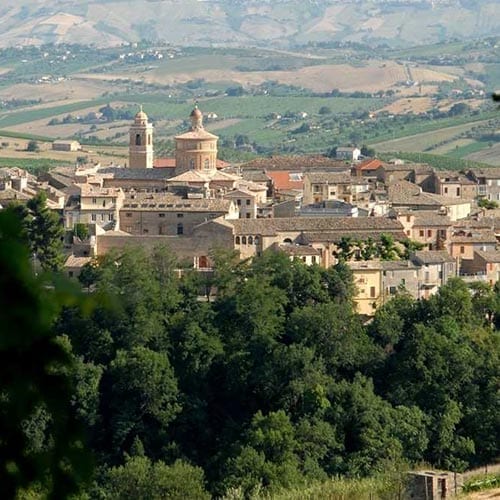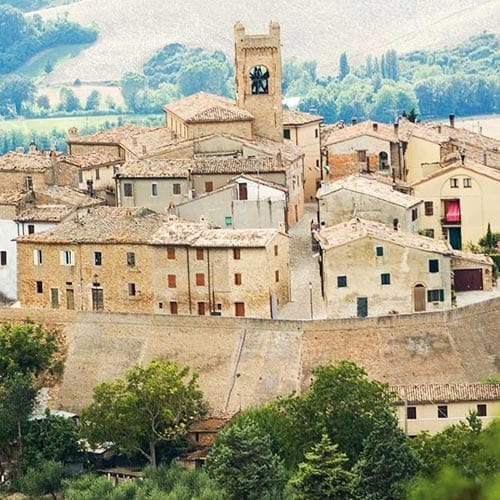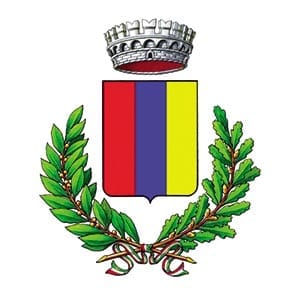 Offagna
Offagna
MUNICIPALITY OF OFFAGNA
(Province of Ancona)
Altitude
mt. 306 a.s.l.
POPULATION
2039 (253 in the borgo)
Patron SAINT
San Bernardino, May 20th
TOURIST INFORMATION
Polo Museale Offagna, Via dell’Arengo
Tel. 392 1302383
info@polomusealeoffagna.it
www.comune.offagna.an.it
 The name probably derives from a lexical corruption of Massa Afraniana, a Roman latifundum belonging to the gens Afrania, illustrious family that had possessions in the territory.
The name probably derives from a lexical corruption of Massa Afraniana, a Roman latifundum belonging to the gens Afrania, illustrious family that had possessions in the territory.
It takes a while to walk around in the historical center of Offagna, but it is worth lingering on the details, observe calmly.
The small medieval castles of the Marche region are like solitary lookouts in the green. The golden colour of the terracotta merges with the hues of the skies and hills, drawing landscapes of sudden suspense. In Offagna, the imposing medieval fortress dominates a quiet borgo, nestled in the gentle hills of the Ancona hinterland, a few kilometres from the sea of the Conero Riviera. Your gaze rests gently on the vineyards that crown the village, on its churches, on the architecture by Andrea Vici, in a dreamy oblivion that is typical of this part of Italy. The fortress (built between 1454-56) is an important example of military architecture thanks to its high walls with a patrol walkway, towers, guard-house and drawbridge. Resting on a tufa cliff, the complex contains an unconventional five storied keep. The borgo is small, but peppered with valuable buildings of the late 1700s. The Church of SS. Sacramento is a jewel of the neoclassical style by architect Andrea Vici and it is appreciated for its formal purity and for the amazing location at the crossroads between two main streets.
Must-see
- In the Church of Santa Lucia – attested to as early as 300 CE and remodelled by Andrea Vici- are two 17th century paintings.
- The Medieval Fortress hosts the permanent Exhibition of Ancient Weapons and the Museum of Natural Sciences“Luigi Paolucci”, boasting interesting paleontological, mineralogical, zoological and botanical collections.
- The Museum of the Liberazione di Ancona – dedicated to the Polish General W. Anders – represents a treasure of memory around the passage of World War II in the territories of Osimo, Offagna and Ancona.
- The Monastery of Santa Zita is another remarkable work by Andrea Vici. Built in 1767 inside the walls, the monastery has a fortified structure and a surprising roof garden.
- Villa Montegallo, situated on a hill facing the sea just outside the historic center, is an aristocratic residence where the owners could relax and dedicate themselves to activities such as hunting.
The Rosso Conero DOC and DOCG Conero Grigiano Reserve wines come from this generous land that also offers exquisite meat products, extra virgin olive oil, honey, essential oils and natural cosmetics.
The Crescia Fogliata is common in the local cuisine (traditional walnut, a sort of piadina cooked over coals, served with foie de campo, a mixture of particular herbs gathered in the fields around the village, which are boiled, drained and stirred in the pan with salt, garlic, rosemary. For meat lovers there is roasted rabbit and stuffed pork. In winter, cookies with must (a type of wine) are a must.



